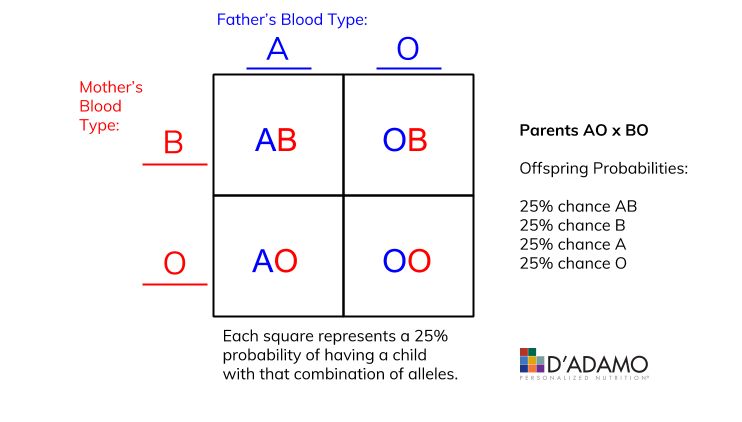
Where does your blood type come from? Your father is (partially) to thank.
Blood type, like all phenotypic traits, is rooted in your DNA. When you were conceived, you received one variation of blood type, or “allele,” from your mother and another from your father.
If you inherited a Type A allele from your mother and a Type B allele from your father, you would have Type AB blood. If you inherited an A and an A, you would be an A. So, if you inherited a Type A and a Type O, you would be an… AO? Actually, no. This is where the science gets a little tricky.

Dominant Vs. Recessive
Type A and Type B blood are considered genetically “dominant” in comparison to the “recessive” Type O. This doesn’t mean they are superior or stronger, just that if you inherit an A or a B allele alongside an O allele, your blood will be Type A or B, respectively.
Imagine Type O as a blank canvas and A and B as different colored paints. Even one allele for “paint” will color the canvas. It follows, then, that the only way to have no color and retain the clean foundation of Type O is to receive no A or B at all — and instead carry two O alleles.
The Gene Scene
Take a look at this diagram, called a Punnett Square. It matches a Type A parent carrying a recessive allele for Type O (top of chart) with a Type B parent also carrying a recessive allele for Type O (left of chart). These parents have a 25% chance of producing a child with Type AB blood, a 25% chance of producing a child with Type A blood, a 25% chance of producing a child with Type B blood and a 25% chance of producing a child with Type O blood.

Does This Apply to Me?
If you know your parents’ blood types, try plugging them into the blank Punnett Square below. But be careful! If your parents are type A or B, it will be difficult for you to know whether or not they carry the recessive allele for Type O blood, like the parents in the diagram above. Type A individuals could either possess two A alleles, or one A and one O. You may have to go back a few generations to figure out which “genotype,” or combination of alleles, your parents carry.
Happy Punnetting! And next time you see your father, be sure to say thanks. You — and your blood type — wouldn’t be the same without him.
